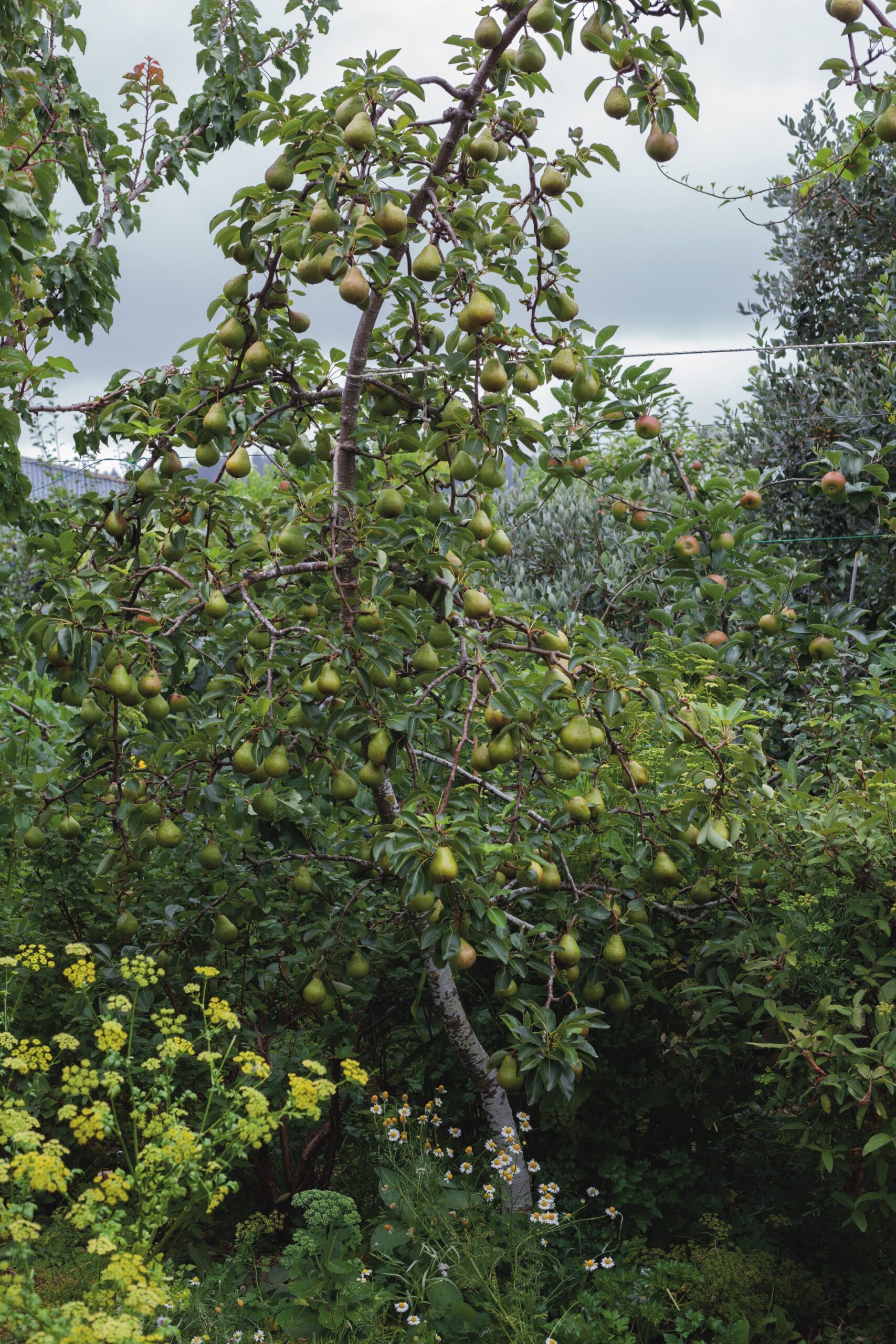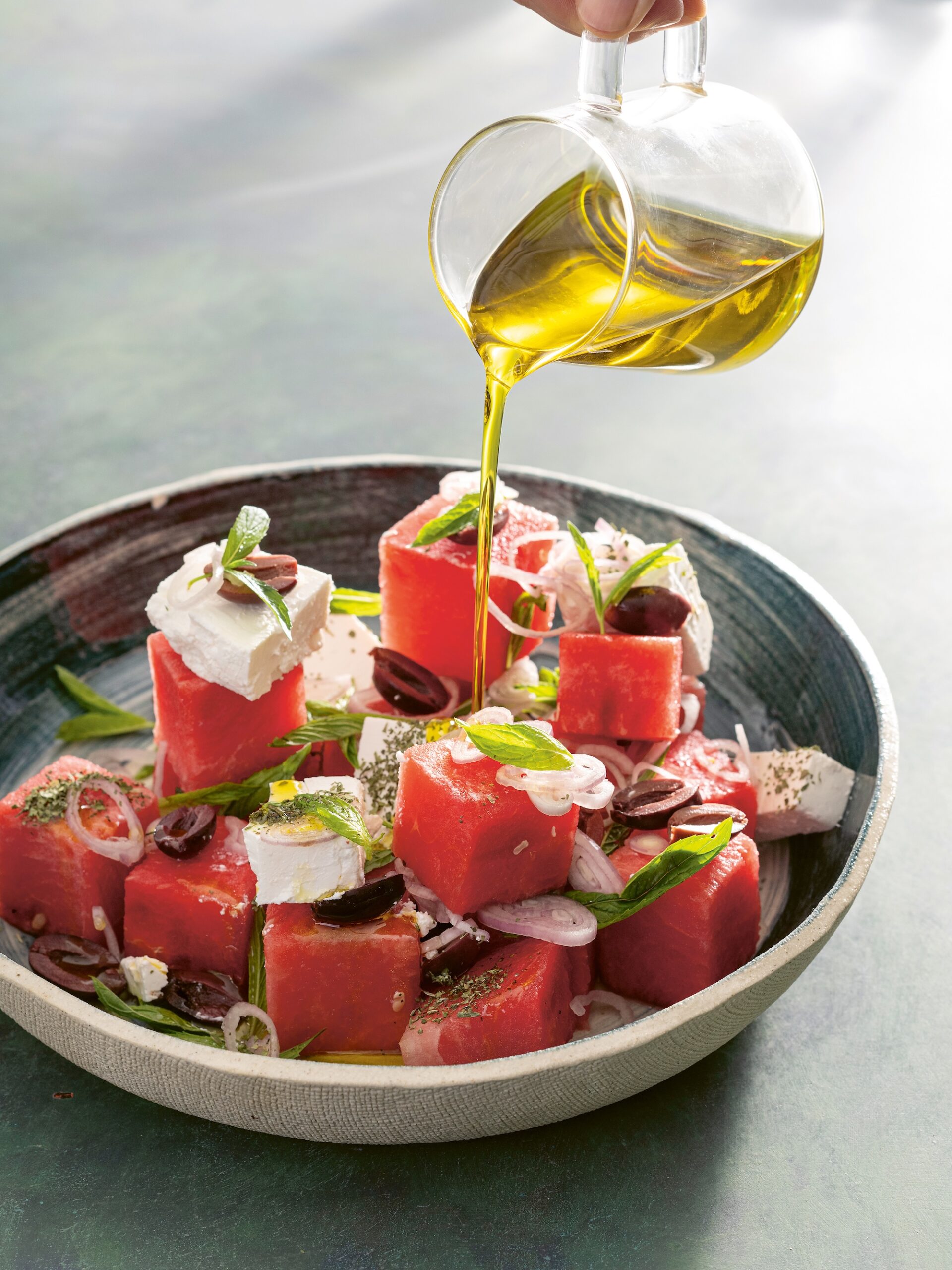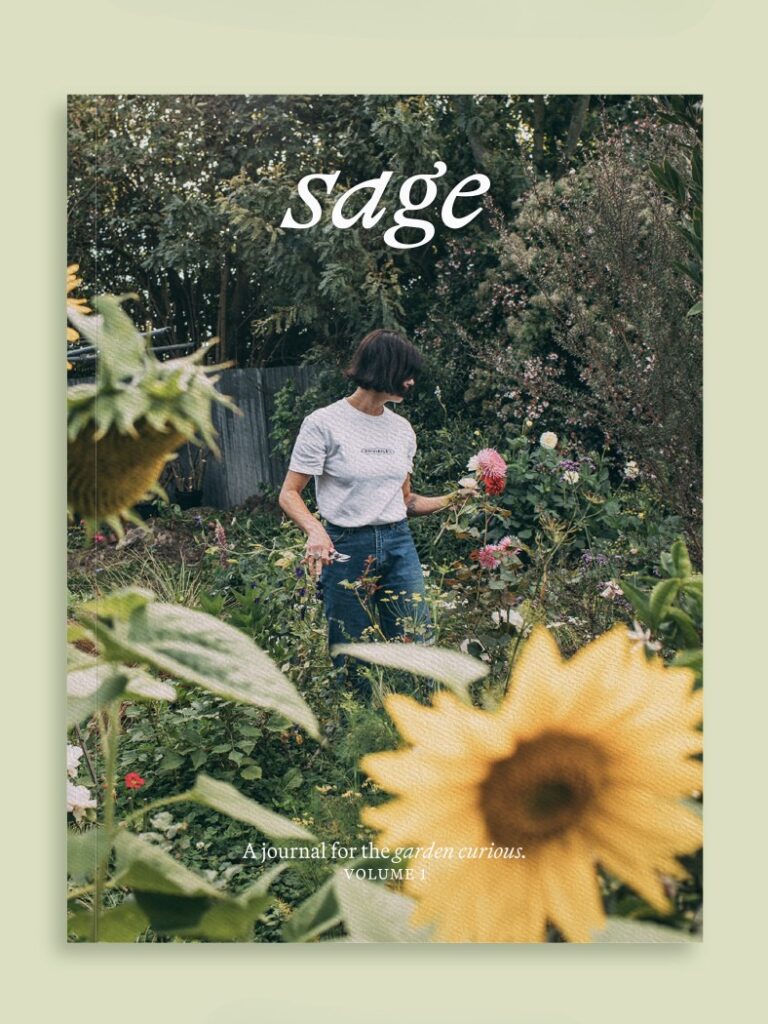Your cart is currently empty!
Waxgills Gliophorus | A hidden world of New Zealand fungi
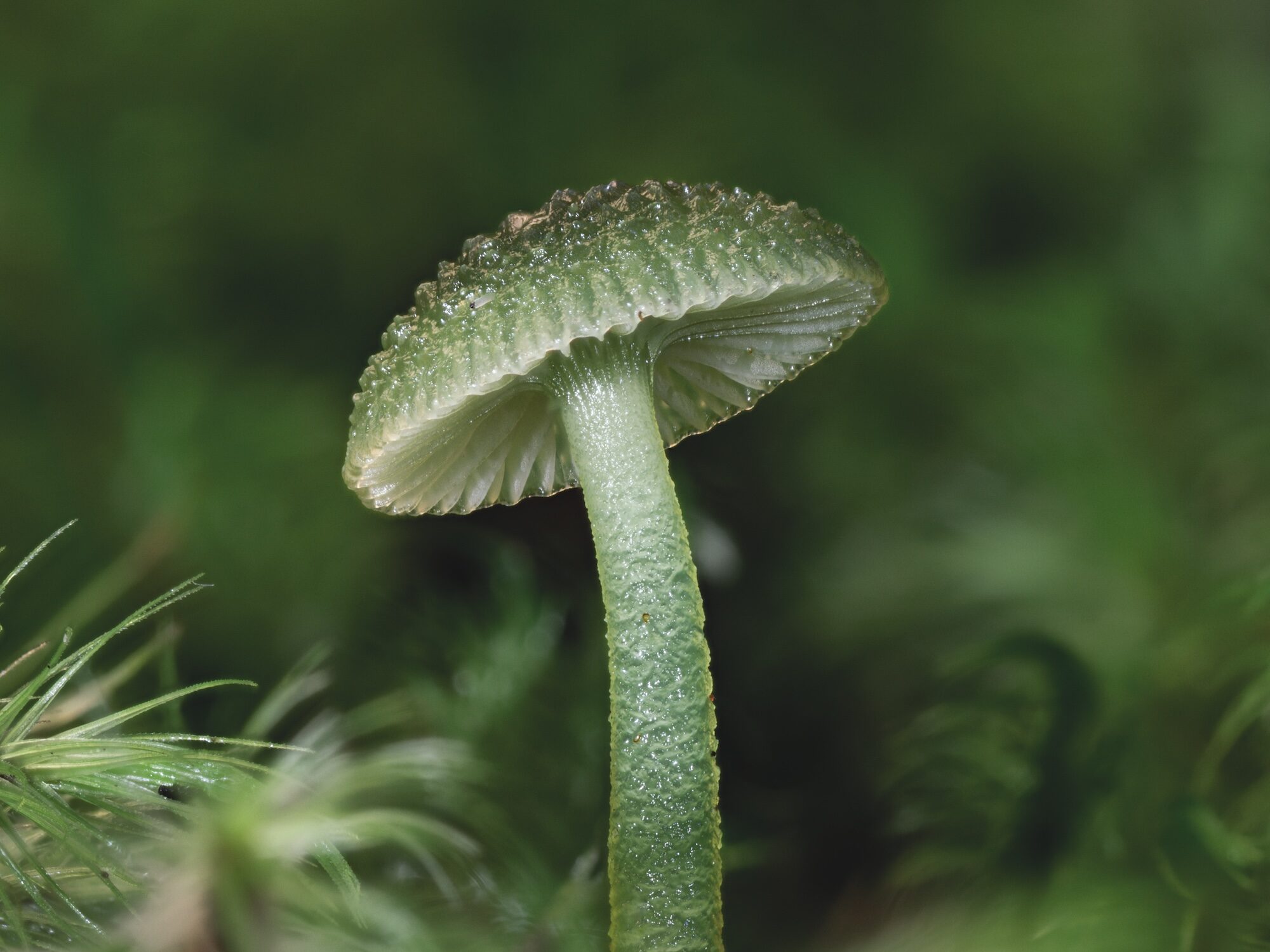
Waxgills Gliophorus | A hidden world of New Zealand fungi
— This is an excerpt from A Hidden World: Discovering the Beauty of New Zealand Fungi – a photographic tribute revealing the breathtaking, often overlooked world of New Zealand fungi, captured through the lens of Paula Vigus – the acclaimed photographer behind Liv Sisson’s bestselling Fungi of Aotearoa: A Curious Forager’s Field Guide (2023).
Waxgills Gliophorus
Gliophorus originates from the Greek/Latin words glia (glue), and phorus (carrying), and ‘carrying glue’ makes sense when you see the gelatinous coating that sets these apart from other waxgills. It gives a jewel-like appearance to the mushroom which is encased in an opaque, shiny coat. When a small amount of external lighting is added, the camera is able to pick up beautiful details that are illuminated by the gel, making them special to fungi photographers.
Gliophorus mushrooms are found all over Aotearoa in both podocarp and beech forests. They pop up around old mossy mounds from fallen trees, the criss-cross tendrils of old tree fern roots, mossy green deposits, or straight out of the soil. They appear in bedazzling colours and crystalline textures that appear like magic when you add light.
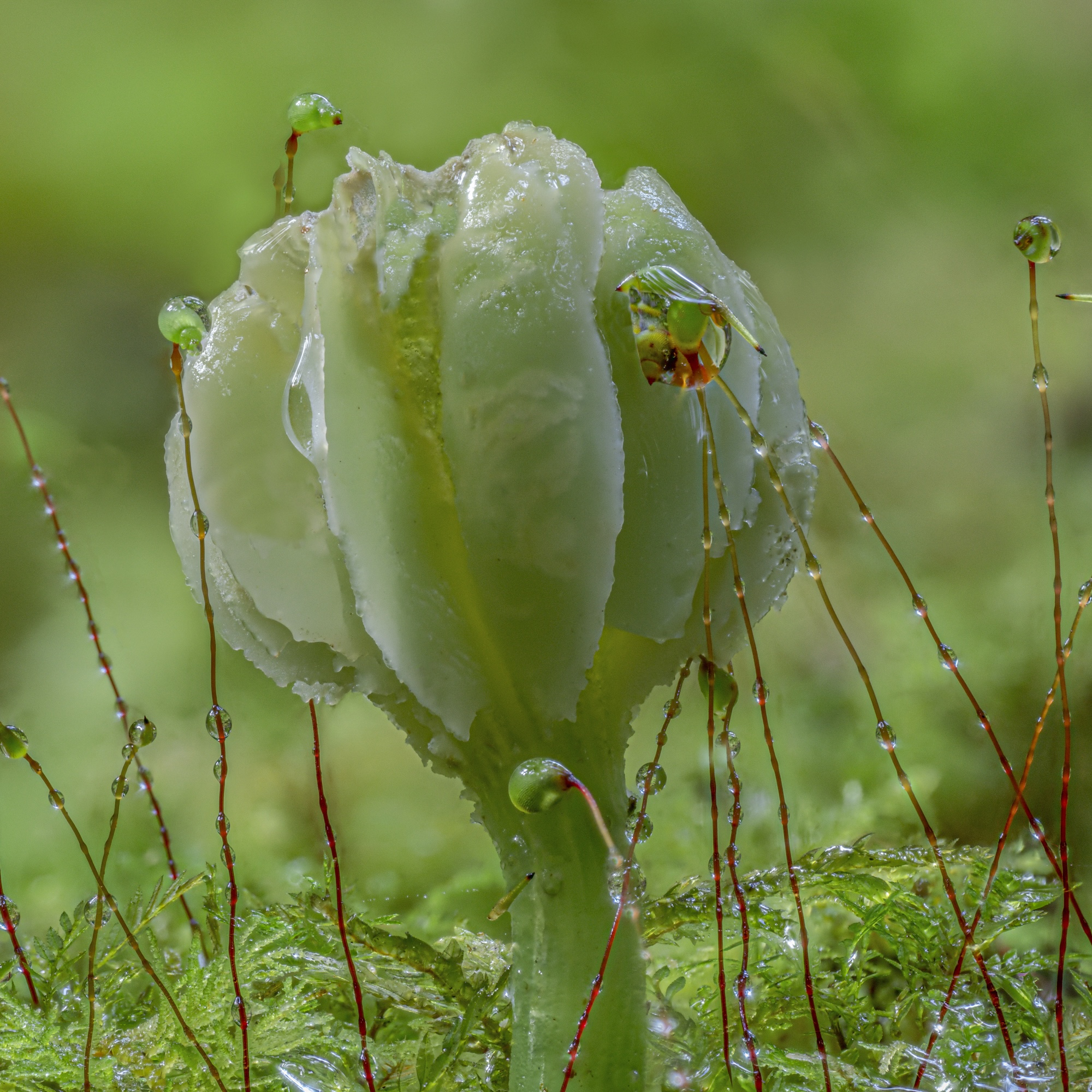
Gliophorus graminicolor
Gliophorus graminicolor
Gliophorus graminicolor (endemic) is a green mushroom, as indicated by its name. It can be distinguished from Gliophorus viridis, another green species, by the presence of a thin glutinous line along the gill edges and a generally lumpier, glutinous texture across its surface. Although initially challenging to identify confidently, with practice these distinguishing features become more apparent. The caps typically measure 10–20 mm across.
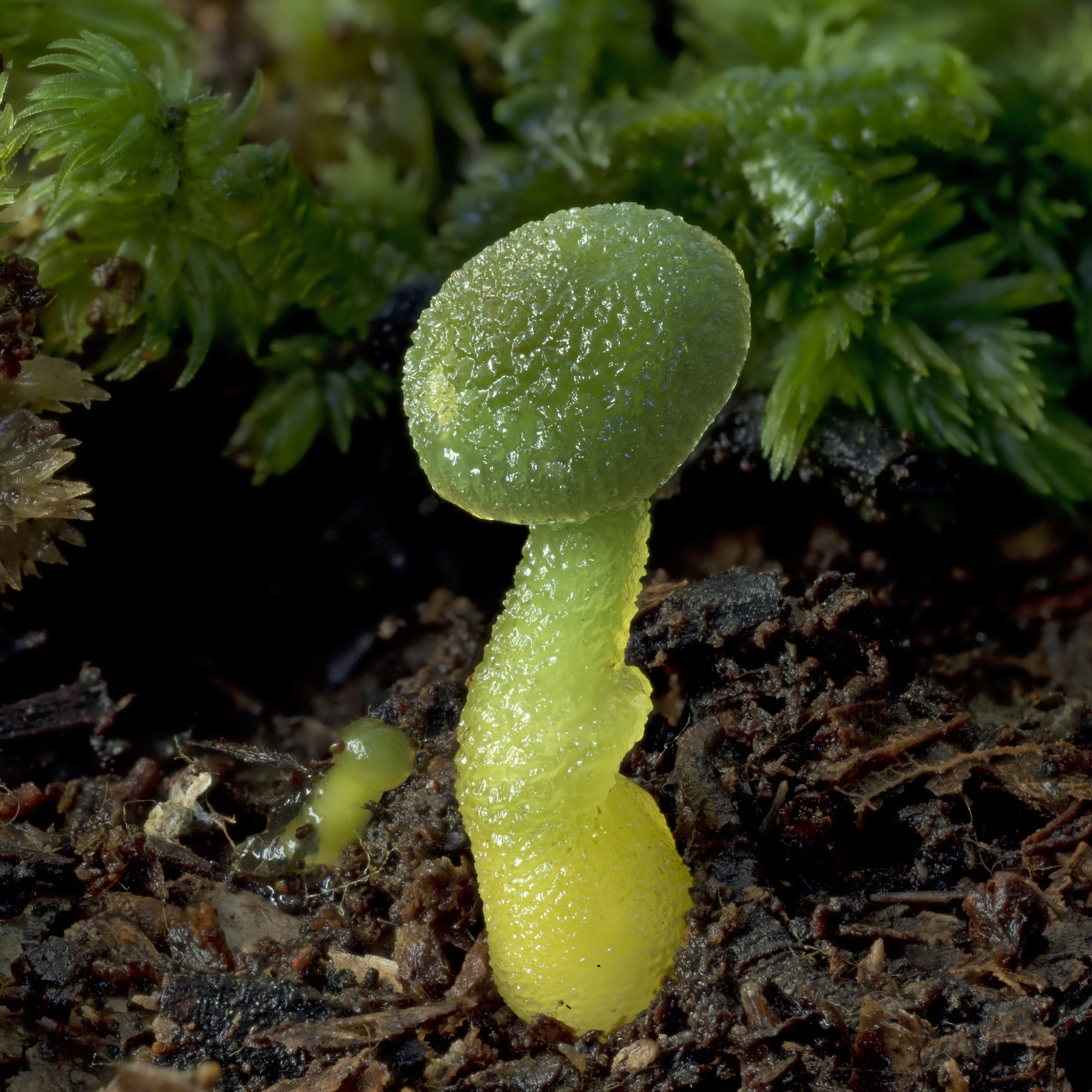
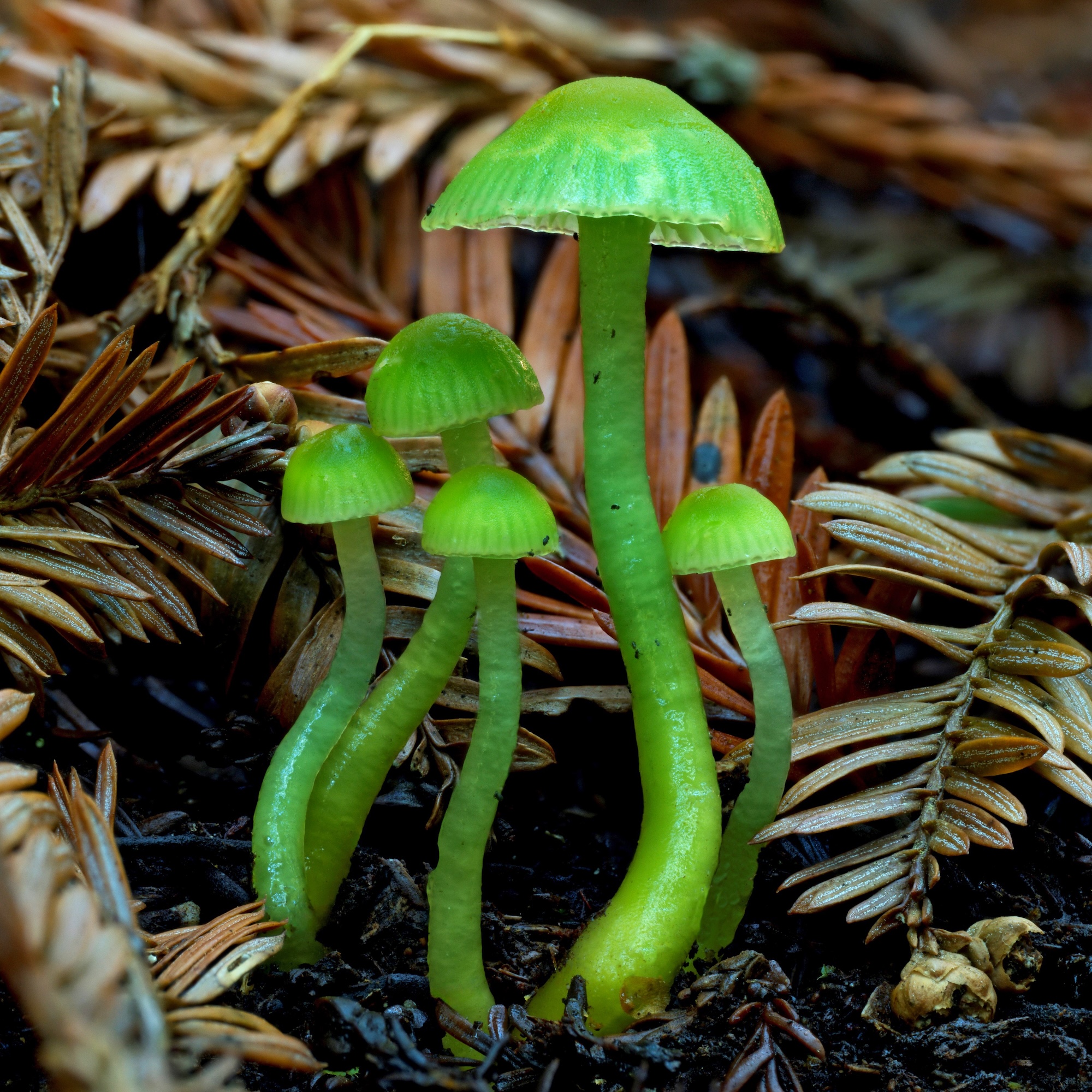
Gliophorus viridis
Gliophorus viridis
Gliophorus viridis (endemic) has a denser green fruiting body than G. graminicolor in my experience. I have seen them growing out of an old, foot-high ponga stump, and straight out of soil substrate on the ground. Their surface is smoother and while G. viridis does have a glutinous coating, it doesn’t have the specifically translucent-edged gills of G. graminicolor. Their stipes often display a colour gradient merging from yellow to a deeper green as they reach the gills. Their caps measure 10–15 mm across.
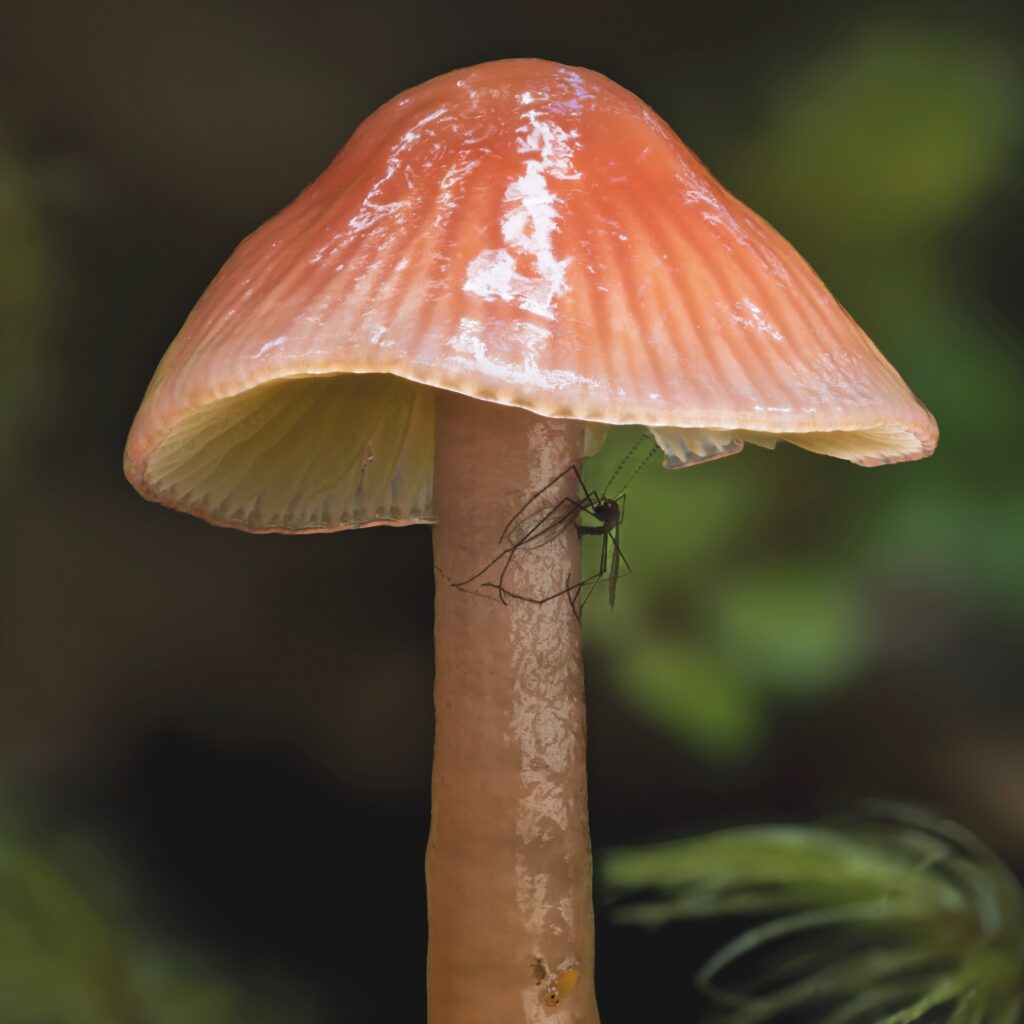
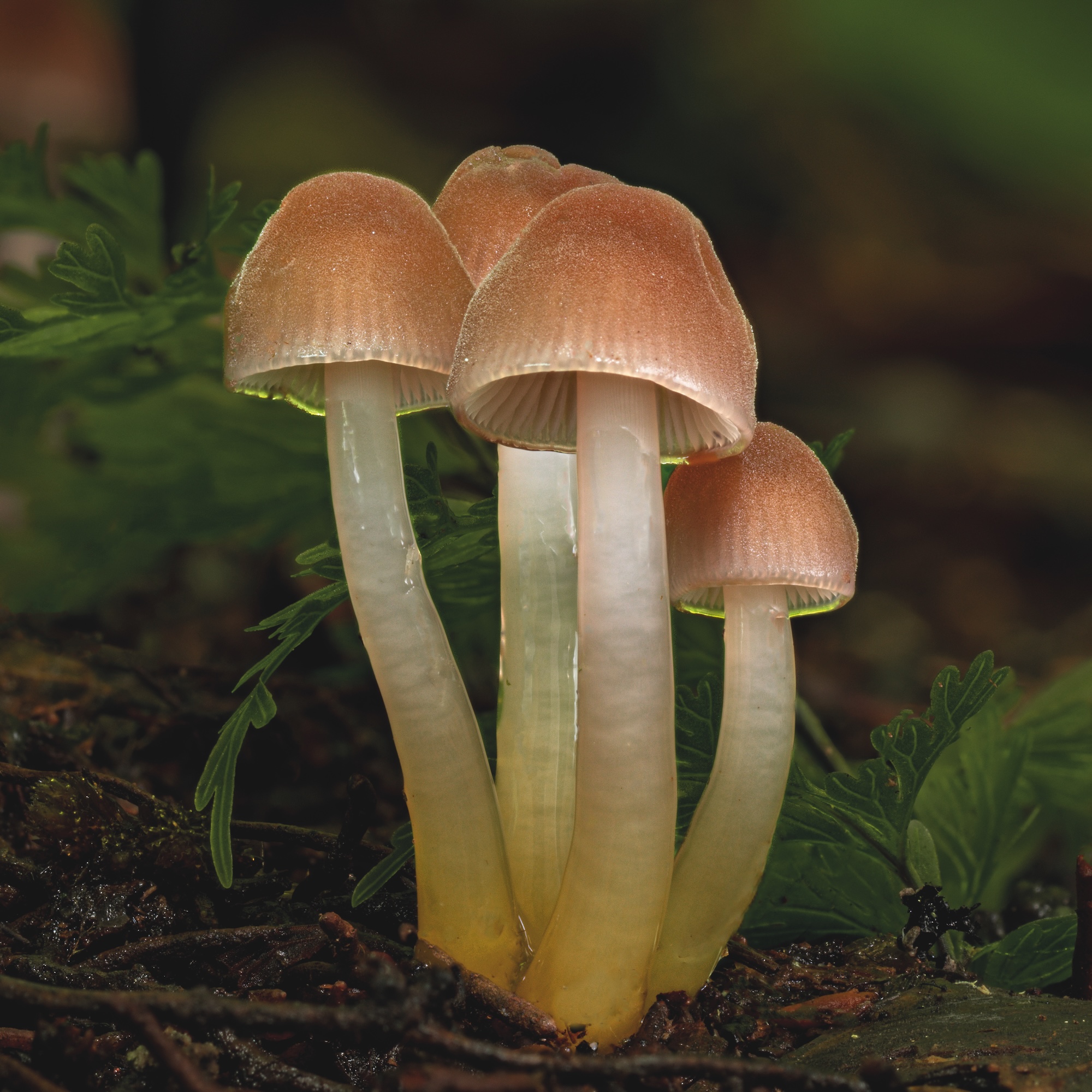
Gliophorus versicolor
Gliophorus versicolor
Gliophorus versicolor (endemic) typically appears in peachy orange tones but, as mentioned already within this genus, colour can vary dramatically. You will often find these growing together with earth tongues (Geoglossum australe). I don’t know the reason for this but it’s a common occurrence and a fun find. Caps measure 10–15 mm across.
The glutinous coating of Gliophorus often entraps unsuspecting insects such as the fungi gnat. Once stuck, there is no escape. You will also likely find any number of tiny springtails stuck or maybe even feeding on the sticky film. Why some bugs stick and others don’t is a question for the experts. I consider bugs on mushrooms a top-level photography subject.
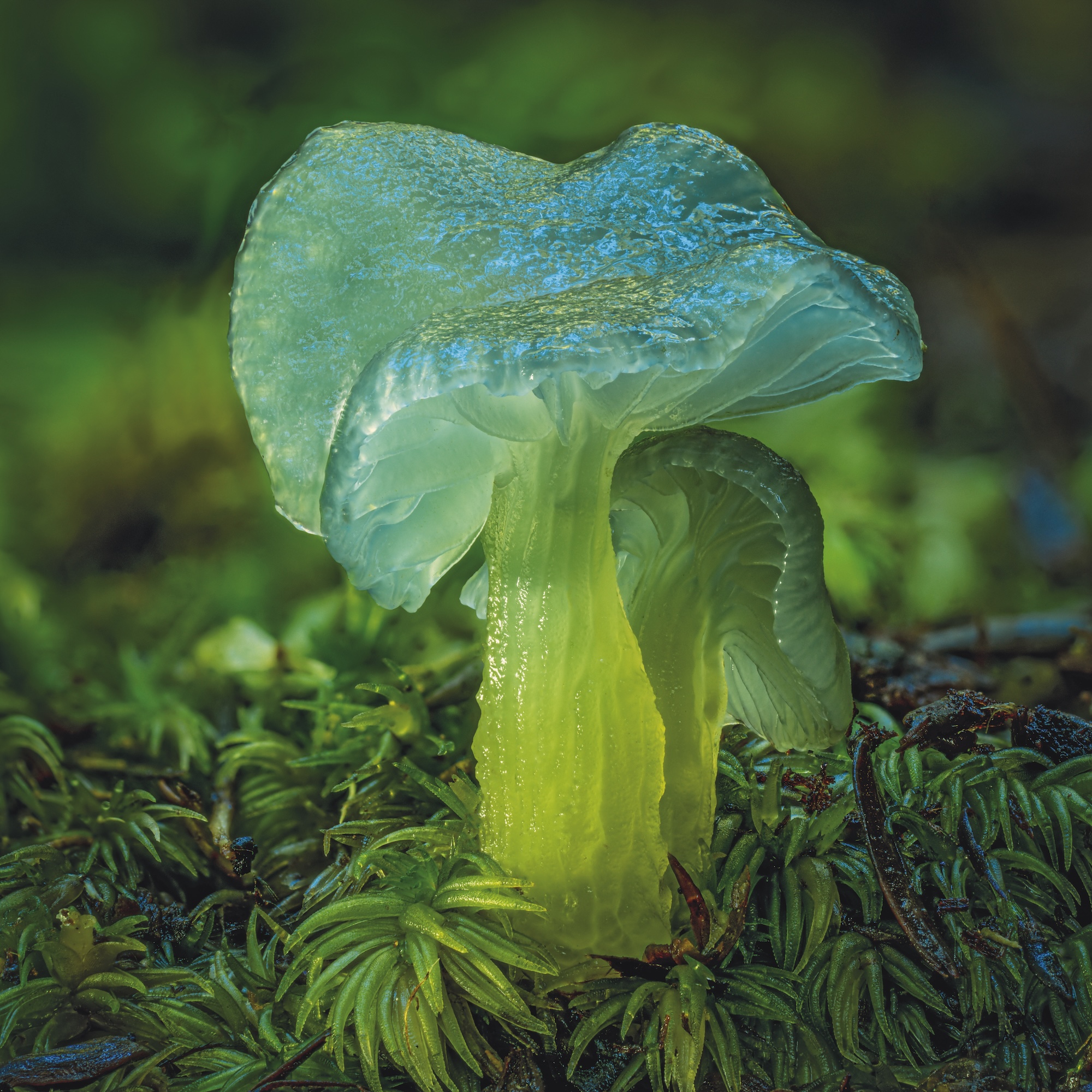
Gliophorus lilacipes
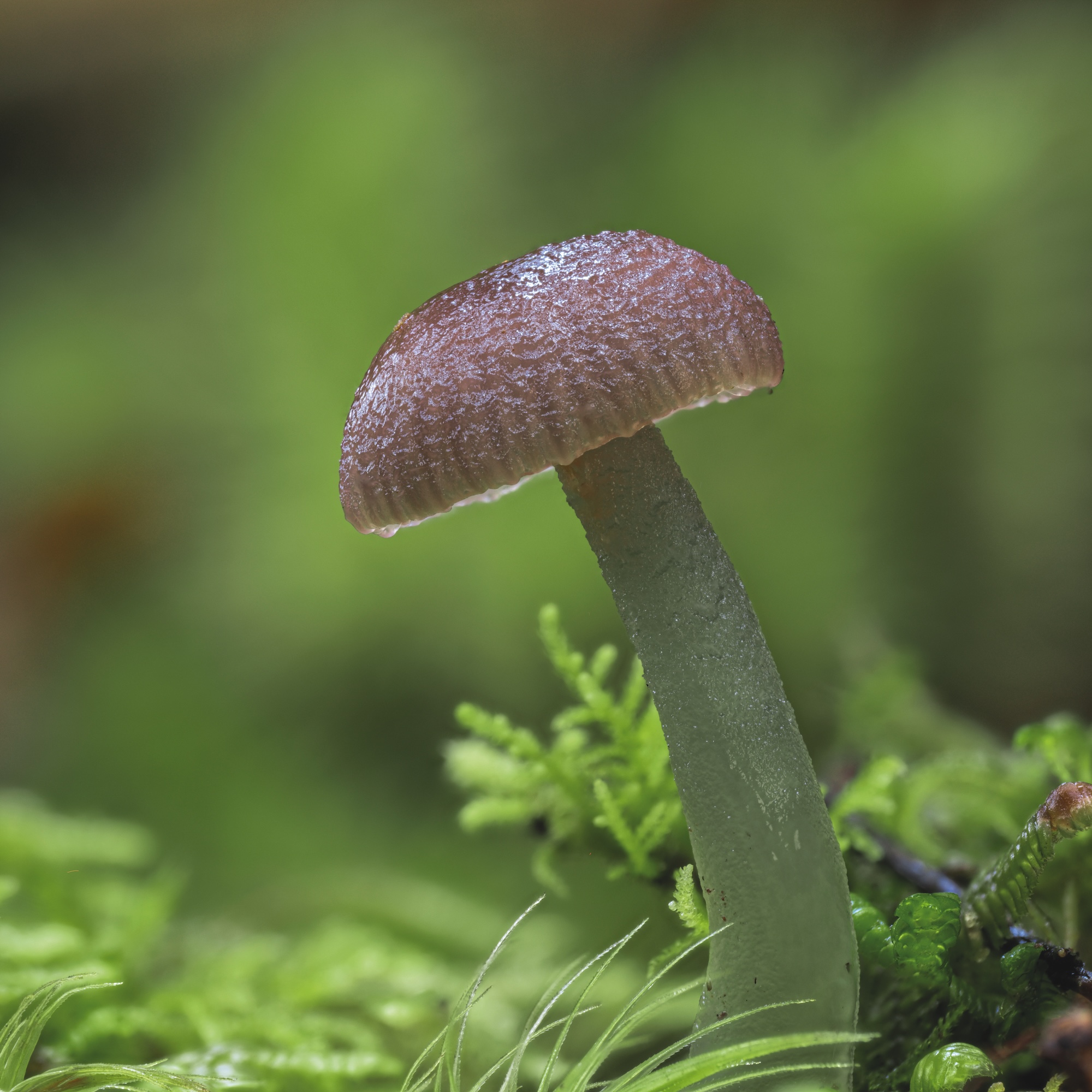
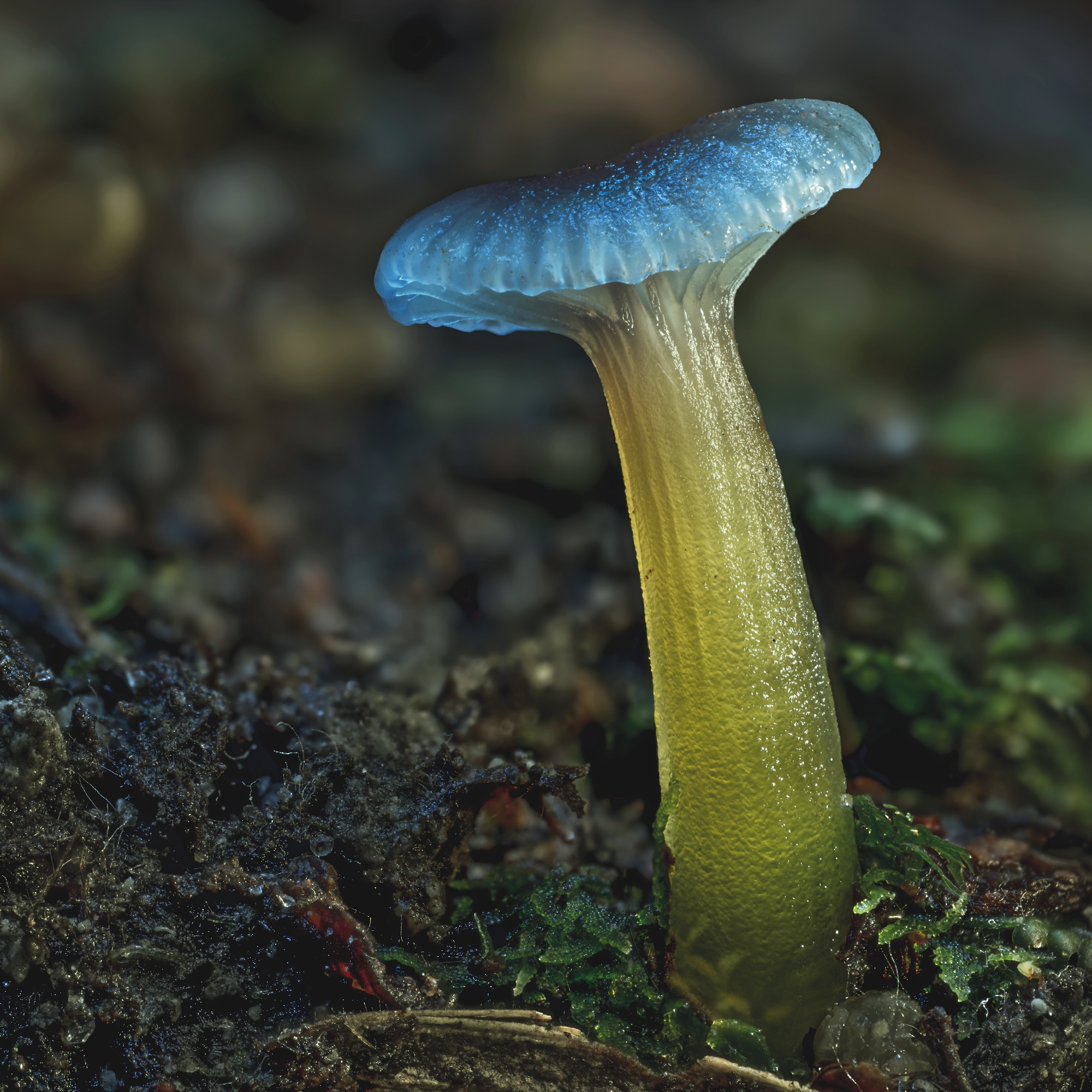
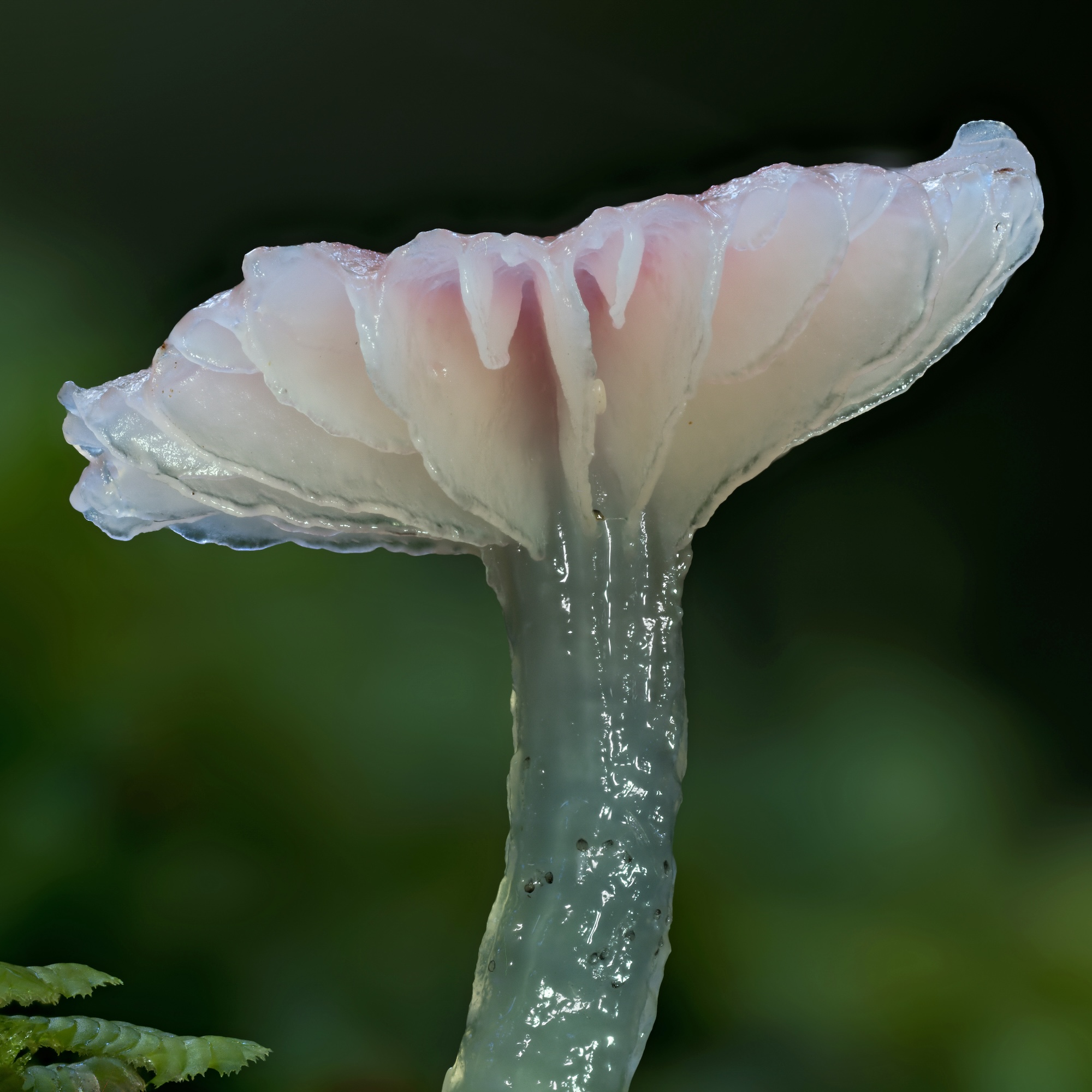
Gliophorus lilacipes
Gliophorus lilacipes (endemic) confuse even the most experienced fungi hunters, and there have been heated debates. They range in colour combinations from purple/pink caps with green stipes, to blue caps with yellow stipes, and more. Texture also varies from lumpy and bumpy to ridged or smooth. No matter the colour combination you find, they are all eye-catching and often grow in groups. Their caps measure 10–15 mm across.
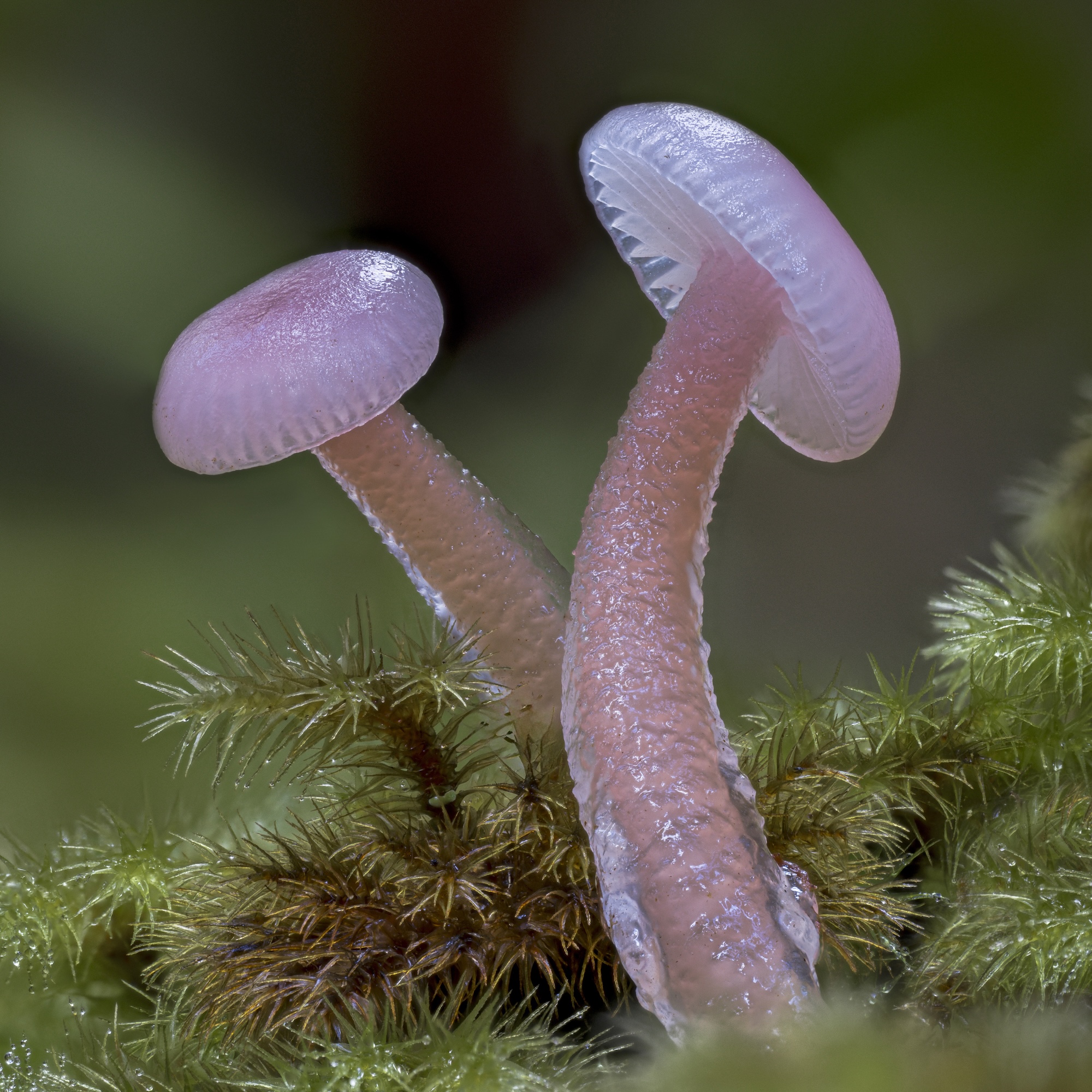
Gliophorus sp.
Gliophorus sp. (status unknown) photographed in the Lake Brunner area of the West Coast. Some of the most stunning Gliophorus sp. I’ve seen and photographed don’t fit the description of any of the currently described species, such as the example on the opposite page. I have not seen anything like this beautiful pair since.
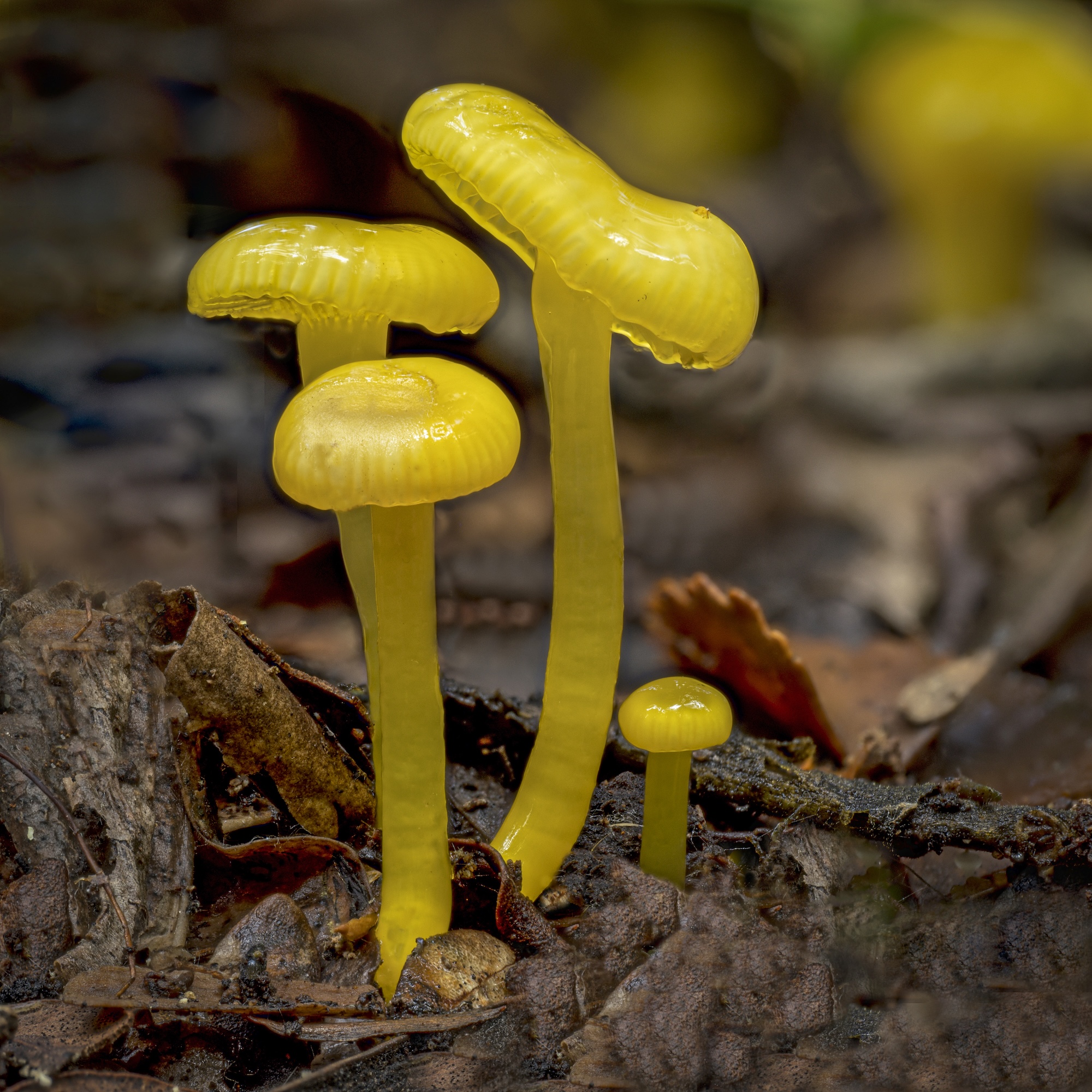
Gloioxanthomyces chromolimoneus
Gloioxanthomyces chromolimoneus
Gloioxanthomyces chromolimoneus (native) is no longer named as a Gliophorus species and has been split into a new genus. Nonetheless, I still feel it best belongs in this part of the book.
Instead of trying to pronounce the name of this one, (the smaller the mushroom the longer the name rule applies here) I just enjoy its beautiful, sunshiny yellow vibes. I’ve seen tiny single ones of these growing out of dead ponga stumps as well as masses growing up a bank in the Kaimai Range.
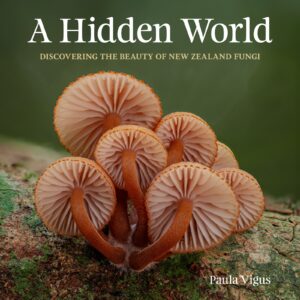
A Hidden World: Discovering the Beauty of New Zealand Fungi by Paula Vigus
A Hidden World: Discovering the Beauty of New Zealand Fungi, Paula Vigus, Potton & Burton, RRP: $49.99
Buy Now
